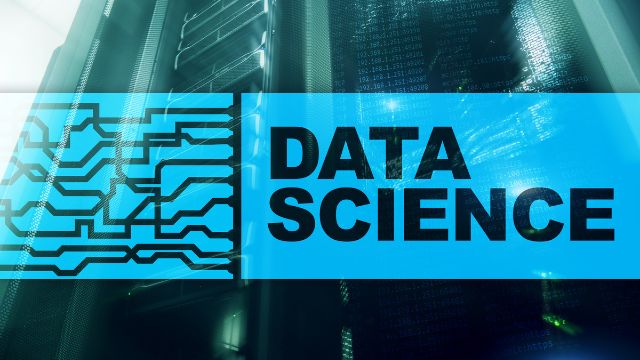Data Science may be a relatively new phenomenon, but in a short period has taken the world by storm. In this tech-savvy world, the creation and consumption of data is consistently proliferating. A massive amount of data is generated every second, thanks to the invention of the Internet and smartphones. This bulk of big data emanates from various digital sources, such as status updates, tweets, photos, videos, emails, documents, blogs, news, and information. The three primary sources from which big data generates include: social data, machine data, and transactional data
According to Techjury, about 2.5 quintillion bytes of data were produced globally in 2021. The recent Techjury report indicates that more than 1.145 trillion MB of data is being created daily by people worldwide in 2023. The Finances Online predicts that around 463 zettabytes of data will be generated by netizens daily by 2025. The global big data market is projected to grow at a CAGR of 14.9 percent between 2023 and 2028 to reach US$ 624.27 billion by 2028, EMR suggests.
What does data science entail?
In data science, structured, semi-structured, and unstructured data are mined for information and insights utilizing scientific methods, procedures, algorithms, and systems. It combines disciplines like mathematics, statistics, and computer science knowledge that help find patterns and make informed decisions from data.

Importance of data science
With the insights extracted from big data, businesses leverage data science to give organizations an in-depth understanding of their customers, operations, and markets. Data science has many applications in healthcare, finance, retail, transportation, manufacturing, social media, and other industries.
In these significant sectors, big data enables businesses to make informed decisions, improve efficiency, and drive innovation by revealing hidden patterns and relationships in data. The effective analysis of big data requires advanced technologies, such as distributed computing, machine learning, and artificial intelligence, making it a key driver of digital transformation.
Uses of data science in daily life
Big data and data science are vital in transforming raw data into actionable insights that drive innovation and inform decision-making in various industries. Data science is also beneficial in shaping the future and securing present-day business. The use of data science can be summed up as follows:
- Predictive modeling: Construct models that forecast future events based on historical data using statistical and machine learning techniques. It is used to predict the risk of chronic diseases, detect fraud in financial transactions, or improve inventory management.
- Data visualization: Creating interactive and meaningful visual representations of data to help individuals and organizations better understand patterns, trends, and relationships in the data. It is used in business intelligence to intuitively present complex data, display medical data, etc.
- Customer insights: Analyzing customer behavior, preferences, and feedback to gain insights into customer needs and inform business decisions. Businesses use customer insights to understand buying patterns and create targeted and personalized marketing campaigns.
- Business optimization: Using data to improve business operations and decision-making, such as identifying inefficiencies, detecting fraud, and optimizing marketing campaigns. Business optimization is used to advance inventory levels, improve supply chain efficiency, target the right customers, and measure the effectiveness of their campaigns.
- Scientific discovery: Applying data science techniques to scientific and medical research, such as drug discovery and disease diagnosis. The real-life applications of scientific discovery include the development of medical devices and new, more efficient energy sources.
How do businesses use data science to extract valuable insights from big data?
Big data is available in enormous volumes. So, businesses extract structured, semi-structured, and unstructured information through a variety of methods, including:
- Structured data extraction: Businesses use software tools, such as data mining and web scraping, to extract information from structured sources, such as databases, spreadsheets, and other well-organized sources.
- Semi-structured data extraction: This involves using natural language processing (NLP) and machine learning algorithms to extract information from semi-structured sources, such as emails, PDFs, and websites.
- Unstructured data extraction: In this type of data extraction, businesses leverage NLP, machine learning, and computer vision technologies to extract information from unstructured sources, such as images, videos, and audio files.
Businesses also use a combination of these methods to extract information from multiple sources and consolidate it into a single, centralized repository for analysis and decision-making purposes.
Necessary technical concepts to Kickstart a career in data science
The prerequisites for pursuing a career in data science include a strong foundation in mathematics and statistics. In addition, proficiency in programming and computer science is essential. The following skills are considered crucial for a data scientist:
- Strong analytical skills: Ability to analyze complex data, identify patterns and relationships, and draw insightful conclusions.
- Programming proficiency: Knowledge of programming languages, such as Python, R, and SQL.
- Knowledge of statistics: Understanding of statistical concepts such as probability, hypothesis testing, and regression analysis.
- Data visualization: Ability to create meaningful and impactful visualizations of data to communicate insights to a wide range of stakeholders.
- Machine learning: Knowledge of machine learning algorithms and techniques, including supervised and unsupervised learning, decision trees, and neural networks.
- Business acumen: Understanding business processes and applying data science to solve real-world business problems.
While these are the critical prerequisites for a career in data science, a passion for problem-solving, continuous learning, and a strong work ethic are also essential traits for success in this field.
Conclusion
Mastering Data Science from scratch in 2023 demands dedication and a strategic approach. The landscape evolves rapidly, making resources like the IIT Madras Data Science course invaluable. This guide underscores the significance of structured learning, hands-on practice, and continuous adaptation to emerging tools and techniques. With the IIT Data Science degree as a beacon, aspiring data scientists can navigate the complexities, cultivate skills, and thrive in this ever-evolving field